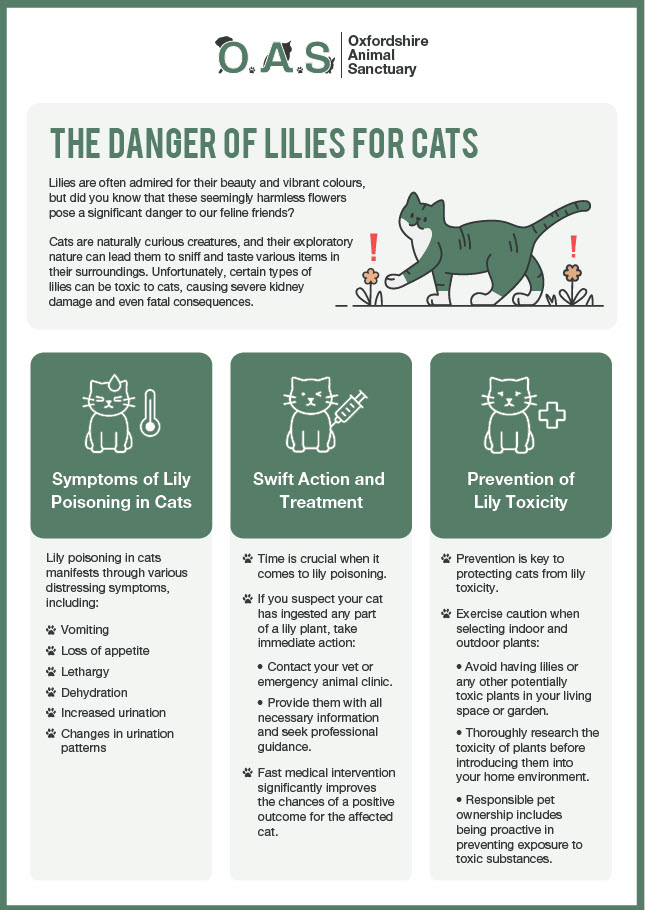Cats are curious creatures known for their exploratory nature, often sniffing and tasting items within their surroundings. However, when it comes to certain types of lilies, this innocent feline behaviour can turn into a deadly mistake. The true lilies (Lilium species) and specific lily hybrids pose a significant threat to cats, as they contain substances capable of causing severe kidney damage and even failure.
This article sheds light on the dangers of lily toxicity in cats, highlighting the importance of awareness and preventive measures for every feline owner.
The Toxic Lilies
Various lily species have been identified as highly toxic to cats. Notable examples include Easter lilies, tiger lilies, Asiatic lilies, and daylilies. These beautiful plants, admired for their vibrant colours and fragrant blooms, harbour a hidden danger within their petals and leaves. The toxic compounds found in these lilies have the potential to wreak havoc on a cat’s delicate system when ingested.
The Lethal Impact
Even the consumption of small amounts of lily plant material or pollen can have dire consequences for cats.
Lily poisoning in cats manifests through a range of distressing symptoms, such as
- Vomiting
- Loss of appetite
- Lethargy
- Dehydration
- Increased urination
- Changes in urination patterns
These early signs of lily toxicity should never be overlooked, as failure to seek immediate veterinary attention can lead to irreversible kidney failure, placing the cat’s life in grave danger.
Urgency in Treatment
When it comes to lily poisoning, time is of the essence. Swift action and prompt medical intervention can significantly improve the chances of a positive outcome for the affected feline. If you suspect that your cat has ingested any part of a lily plant, it is crucial to act immediately by contacting your veterinarian or emergency animal clinic. Providing them with all the necessary information and seeking professional guidance will aid in the appropriate course of treatment, potentially saving your cat’s life.
Prevention is Key
Considering the potential severity of lily toxicity in cats, prevention becomes paramount. If you share your home with feline companions, it is advisable to exercise caution when selecting indoor and outdoor plants. Avoid having lilies or any other potentially toxic plants in your living space or garden. It is essential to research the toxicity of plants thoroughly before introducing them into your home environment, ensuring the safety and well-being of your beloved feline friends.
While lilies may bring beauty and elegance to our surroundings, they pose an imminent threat to the lives of our feline companions. Understanding the risks associated with lily toxicity in cats is crucial for responsible pet ownership.
By being aware of the dangerous lilies, recognizing the symptoms of poisoning, and taking swift action in case of ingestion, we can protect our cats from the devastating consequences of lily poisoning. Remember, prevention is the key to safeguarding our furry friends and ensuring their continued health and happiness.
Here’s our downloadable poster reminder of what to look out for – click to download the PDF.



